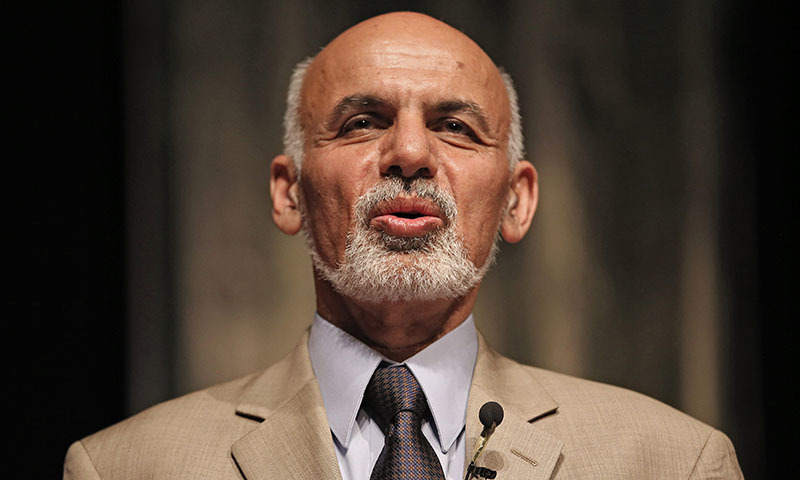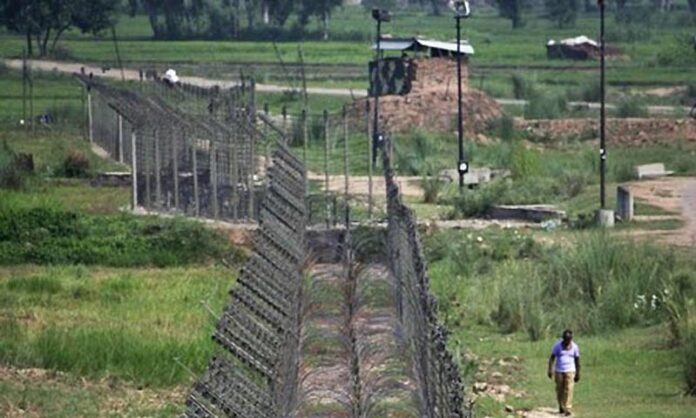In the current vitriolic atmosphere that exists between Pakistan and India any discussion by the two on who started the current round of ceasefire violation generally results in nationalism and jingoism trumping all logic and reason. Under such an ambiance for any one on either side of the divide to categorically blame one or the other without being privy to inside information about what is actually going on in the Kashmir border, would be both unethical and unprofessional. It would make more sense if based on the undisputed facts, other factors are examined and from there attempt to arrive at some logical conclusions. What is commonly agreed by both so far about the crisis is: first heavy firing by artillery, mortars and machine guns is going on across the Kashmir border and in the process it is the civilians rather than the military men who are getting killed. Second, if the situation is not diffused it could easily snowball into a much wider armed conflict between two nuclear armed neighbours and finally both claim that they are merely responding to indiscriminate and unprovoked firing from the other side.
The Indian viewpoint that is constantly being projected by their experts in both the print and electronic media puts the onus squarely on the state of Pakistan. A logical assessment of their accusation would be in order. Why would Pakistan want to start armed hostility in the eastern border when its military already has its hands full engaging the Taliban groups on the western front, one would ask? The Indians opine that the firing from Pakistan could well be an attempt to provide artillery fire cover to anti-Indian elements infiltrating in their part of Kashmir. The entire Indo – Pakistan border, especially along the working boundary where the current shelling is going on is so heavily fenced and guarded that only airborne infiltrators armed with self-propelled jet packs can hop over. Since such a capability does not exist in Pakistan and even if it did, the need for artillery fire cover would not arise; in fact it would give away the element of surprise so essential for the success of the operation – hence this line of reasoning just does not gel or add up.
The need for the Pakistan Army to continue to project India as an existential threat to national security in an effort to justify its size is another argument the Indians frequently put forward as the reason for Pakistan’s initiation of the current hostilities across the LOC. This argument might have held water when India was the sole adversary which the national armed forces had to confront. Pakistan, after much debate and even serious disagreements among the political parties has finally launched a no-holds barred full scale military operation against the Taliban of all ilk in its tribal belts. Considering that the mighty USA with all its financial resources and military hardware failed to subdue the Taliban forces in Afghanistan even after a decade of warfare, the task which the Pakistan Armed Forces has undertaken is a gigantic one where it has to spare no effort to achieve its objective. With the full support of the public the military campaign to date has made significant gains and the Taliban stronghold in FATA has been considerably weakened and they are on the run. Further mop up operations would ensure Taliban’s sanctuary especially in North Waziristan is fully uprooted. Successfully neutralizing the Taliban operational base in the tribal belts will be only the first phase of the military campaign. The inevitable backlash by the insurgents in its towns and cities by the Taliban sleeper cells have also to be dealt with by the Armed Forces, the Para Military Forces and the Police.
The war against the Taliban insurgency is going to be a long-drawn affair and the national exterior maneuver and military strategy dictates strict avoidance of opening of any new front. In today’s environment when the Pakistan Army and the PAF are engaged in full-fledged military operations on its western flank against the local and foreign militant extremists and terrorists, voluntarily opening a new theatre where an uneasy ceasefire had held since an unwritten agreement dating back to 2003, makes no sense and defies logic. This line of argument also holds little water and can find acceptance only among the diehard Pakistani haters whose bias make them lose all reason and sensibility.
If Pakistan is not guilty of initiating cross-border fire in the current crisis the finger would then point towards India. Before declaring India as the guilty party, rationales for their action must be examined and assessed in a manner similar to the one followed in the case of Pakistan. Consider the following: how does India justify an over a million strong army, the third largest (in numbers, not capability) air force and a navy aspiring to achieve ‘blue water’ capability? The huge size of the Indian military might have been relevant two decades ago when the entire war hypotheses rested on waging of a full-scale conventional war with the objective of humiliating the Armed Forces of Pakistan and conquering the country. After the nuclearization of the subcontinent even the Indian experts have come to the conclusion that a full scale war similar to the ones in 1965 or 1971 is a thing of the past. They lament the fact that the nuclear factor has in one sweep neutralized the massive conventional military advantage India had so assiduously built at a great cost.
To counter the nuclear factor their experts then came up with the Cold Start and Pro Active Operations (PAO) strategies where the Indian forces were to be reorganised to carry out swift, sharp and very limited raids into Pakistan, declaring victory before the latter could bare its nuclear fangs. Unfortunately when push came to shove in 2008, the Cold Start and PAO could not be implemented for some very valid reasons. When the Indian military finds itself severely hamstrung even while planning small punitive cross border military actions against its arch enemy, how does it justify its humongous size? With Pakistan even a Cold Start or PAO is fraught with dangerous consequences and a classical full blown land-warfare with China – the other traditional foe – is remote because of the towering Himalayan Range that separates the two nations. That only leaves the other neighbours in the subcontinent all of whom are too small and militarily weak to even remotely threaten India. What then is the justification for maintaining such a large military establishment? The need to paint Pakistan as a potential threat which despite its relative military weaknesses is likely to initiate aggression against India at the slightest pretext appears to be the only reason that might justify the current size of the Indian military. Continuing to project Pakistan and its Armed Forces as a threat to India, therefore, has become a compulsion for the Indian Armed Forces in today’s environment. This line of argument finds ready acceptance among the Indian public given the history of the subcontinent where in the past invading armies from the west (where Pakistan is located) would periodically attack and conquer large portions of northern India.

As long as the Janus-faced Karzai was the President of Afghanistan, his double-speak made any peace between Afghanistan and Pakistan nearly impossible. With his departure and the election of Ashraf Ghani a rapprochement between the two countries is on the cards once the Haqqani group is expelled from the Pakistani soil. For India, which has left no stone unturned to befriend Afghanistan at the cost of Pakistan and which sees improvement of Afghanistan – Pakistan relationship as a serious threat to its strategic interest in the region, the success of the current military campaign by Pakistan against the Taliban is being viewed with serious alarm by the Indian hawks. Raising the military temperature by indiscriminate firing across the LOC by India could well be a ploy to force Pakistan to divert forces from the western border in a crude attempt to ensure the anti Taliban campaign does not succeed is indeed likely. The fact that the Indian government has spurned all requests by Pakistan for talks to stop the madness; instead their leadership announces that now their guns will speak would point to India as the one more likely to have started the hostilities.
The Indian military and their think tanks would do well to remember that the campaign Pakistan is waging on its western border is against a force that threatens global security and has the full backing and support of the international community. Any effort to sabotage the campaign would be short-sighted and will boomerang.
The Pakistani Armed Forces are better prepared and more effective in their primary role of war fighting today partly because of late they have not been distracted by responsibilities besides their profession. And more importantly, its Army and the Air Force are perpetually operating on a war-footing especially since 2009, fighting a very tenacious adversary under very challenging environment – engaging fanatic, ruthless and shadowy elements who hold no brief for the Geneva Convention and are hard-nosed, cold-blooded killers, takes much courage, strategic planning and skill. No peace time training can be a substitute for actual combat with live ammunitions where lives are taken and lost. Our troops and aircrew are battle-hardened, combat-experienced war veterans flush with battlefield victories and are ready to take on the adversary at any level. Initiating hostility against such a force on false pretext is best avoided.




